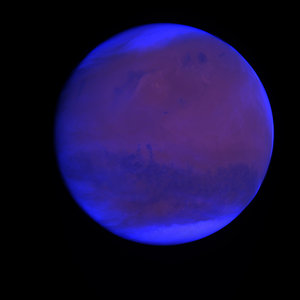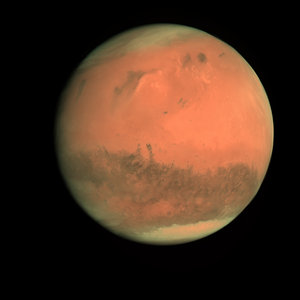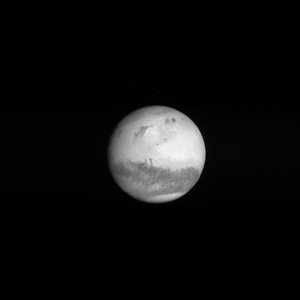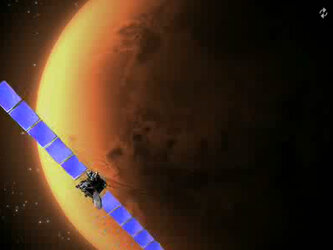Stunning view of Rosetta skimming past Mars
This stunning view, showing portions of the Rosetta spacecraft with Mars in the background, was taken by the Rosetta Lander Imaging System (CIVA) on board Rosetta’s Philae lander just four minutes before the spacecraft reached closest approach to the Red Planet earlier this morning.
While the Rosetta orbiter instruments were switched off as planned during several hours around closest approach, which occurred at 03:15 CET today, some of the lander instruments were operational and collected data from Mars.
This incredible CIVA image was taken about 1000 kilometres from the planet’s surface. A portion of the spacecraft and one of its solar arrays are visible in nice detail. Beneath, the Mawrth Vallis region is visible on the planet’s disk.
Philae lander in first autonomous operation
This is the first time that the Philae lander operated in a totally autonomous mode, completely relying on the power of its own batteries. This will be the case when the lander will have touched down on comet 67P Churyumov-Gerasimenko in 2014 and will have to perform its scientific measurements independently from the Rosetta orbiter.
A sequence of observations from today's Mars close approach were run successfully, providing an important test for the science observations of the comet nucleus to come. In addition to CIVA, the ROMAP instrument was also switched on, collecting data about the magnetic environment of Mars. The data sets acquired by both instruments are unique, as the presented image summarises for CIVA.
The Philae lander still has still a long route ahead to ensure success for its highly challenging venture, which requires a safe landing on an unknown icy body, and performing a very complex programmed sequence of operations in a highly constrained environment.
A number of updates and validation of some systems and instruments are still required, which should be implemented during the upcoming cruise phase and the Earth swingby in November 2007.
For more information
Jean-Pierre Bibring
Philae Lander co-Lead Scientist and Philae/CIVA Principal Investigator
Institut d’Astrophysique Spatiale - IAS, Orsay, France
Email: jean-pierre.bibring @ ias.u-psud.fr
Gerhard Schwehm
ESA Rosetta Mission Manager
Email: gerhard.schwehm @ esa.int
ESA/ESOC Communication Office
Darmstadt, Germany
Tel. +49-6151-90-2696













